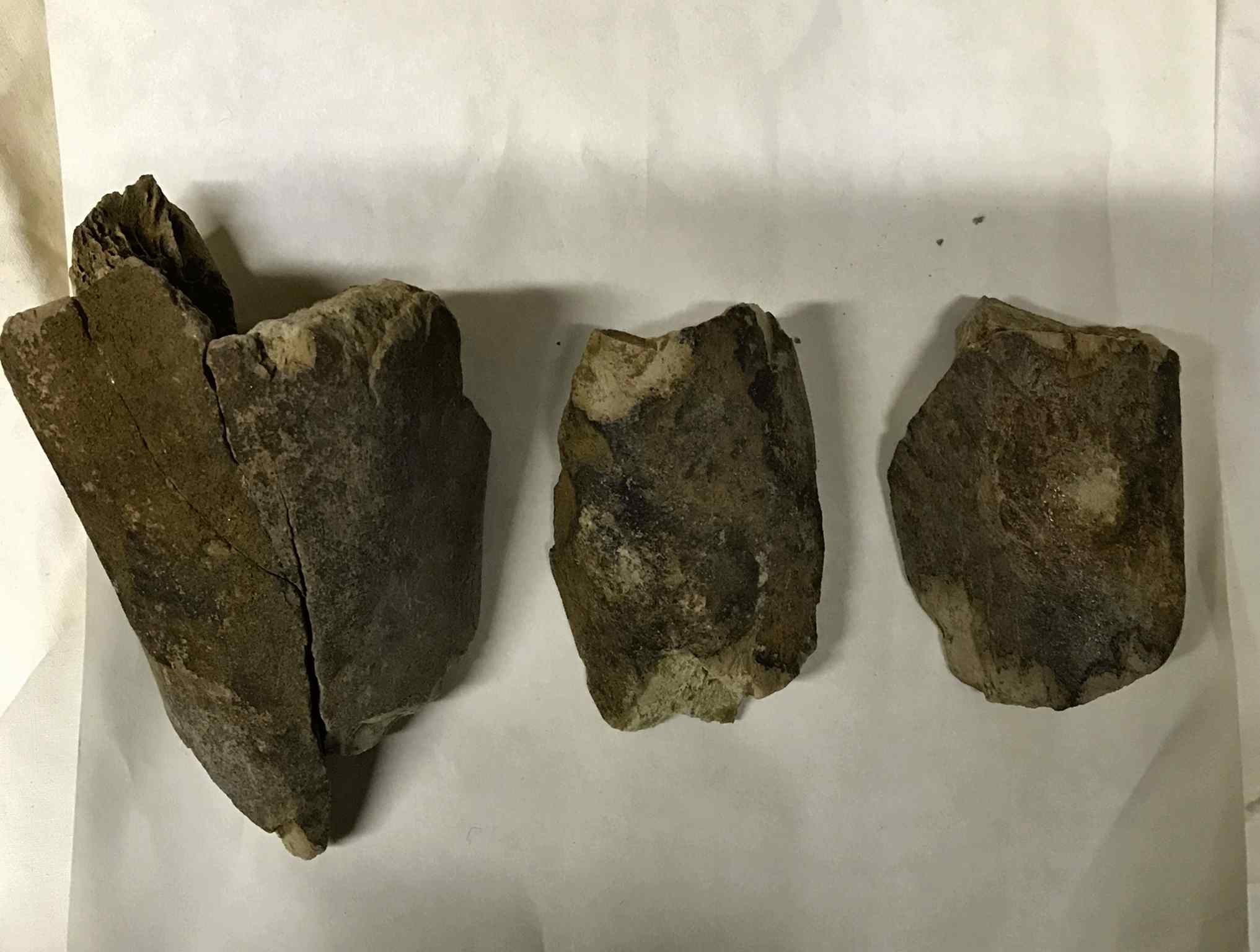Explore the catalogue
Catalogue
Fosslised animal bones
These fossilised bones were donated to Shrivenahm Heritage Centre by Rachel Daniels of Cranfield University Barrington Library. There was an explanatory note attached to them as below.
These fossolised bones were brought up by a core drill operated by 62 CRE for a geology project of Lt. R.C. Swanson RE, in February 1979. The borehole was near the Quartermaster's Store at the site shown on the attached map. (Unfortunately we don't have the map), and the bones were at a depth of about 13 feet in a layer of organic clay just above the "brash" (calcereous sandstone).
The large bone, that came up in several pieces, was identified by the Natural History Museum as the shaft of a humerus bone belonging to a large Artiodactyl such as a Bovini (Cow family) or a very large Cervid (Deer family). It was suggested that it belonged to a Megaloceroswhich was around in the interglacisl period between 70 - 120,000 years ago.
The small fragments are of other bones almost certainly of the same animal. Their presence suggests that the complate skeleton is likely to be there.
Since 1979, much research has been carried out on the geological time scales. The period from which these bones are likley to have come from is known as the, 'Ipswichian Interglacial' from about 125,000 to 112,000 years ago. The animal is likely to have been a Auroch, a large wild cow.
- Place:Beckett
- Ref:Display Case
- Item Ref:N1314
- Find it:Display Case
Do you know?
We are always on the look-out for more information about Shrivenham and district. If you have old photos, know of historical facts, old documents (especially deeds) please contact us...
If you would like to view any item please email us to make an appointment, details on the Home page.

